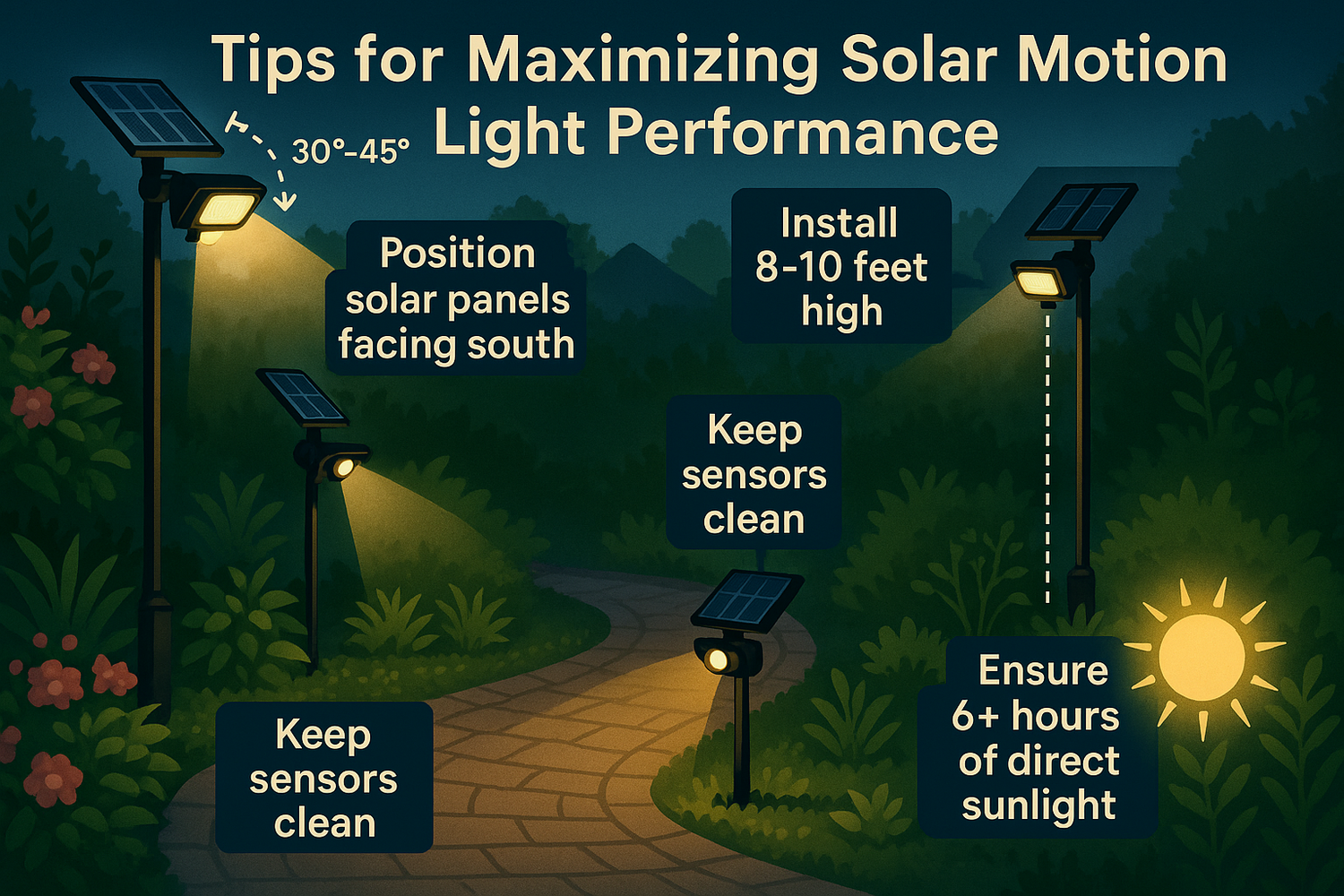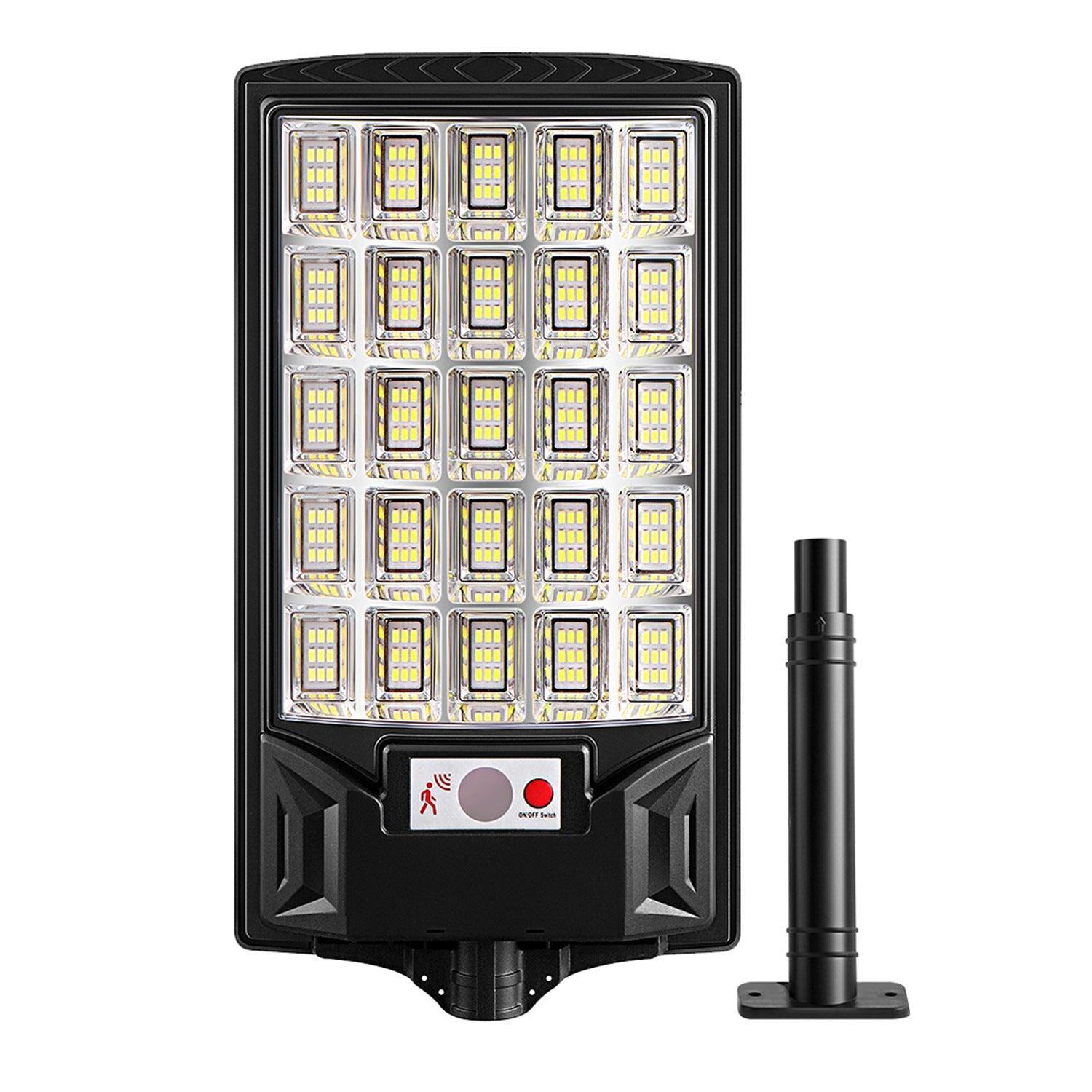
If you want to get the best out of your solar motion light in your garden, focus on smart placement and regular care. Reliable and stylish outdoor lighting not only lights up your space but also saves energy and boosts safety. Modern solar motion sensor lights offer more than just brightness—they come packed with smart features like motion detection, ambient light sensors, and remote controls.
Here’s what sets today’s solar motion sensor lights apart:
- They use LEDs that cut energy use by up to 75%.
- Solar panels store power during the day, so you don’t need to rely on grid electricity.
- Smart sensors turn lights on only when needed, which extends battery life.
Rackora’s Moon-Inspired Solar Motion Sensor Street Light brings together elegant design and advanced technology, making garden upgrades easy and impactful.
Key Takeaways
- Place solar motion lights where they get 6 to 8 hours of direct sunlight and avoid shadows from trees or buildings.
- Mount lights 6 to 10 feet high and angle sensors toward walkways or entry points for better motion detection and coverage.
- Clean solar panels regularly to remove dirt and debris, which helps lights shine brighter and last longer.
- Adjust sensor sensitivity and detection range to reduce false triggers from pets or cars and improve security.
- Choose lights with brightness and sensor range that match your garden size for even coverage and safety.
- Use smart features like automation and remote control to save energy and customize your garden lighting easily.
- Check your lights often for damage, battery health, and proper sensor alignment to keep them working well year-round.
Placement
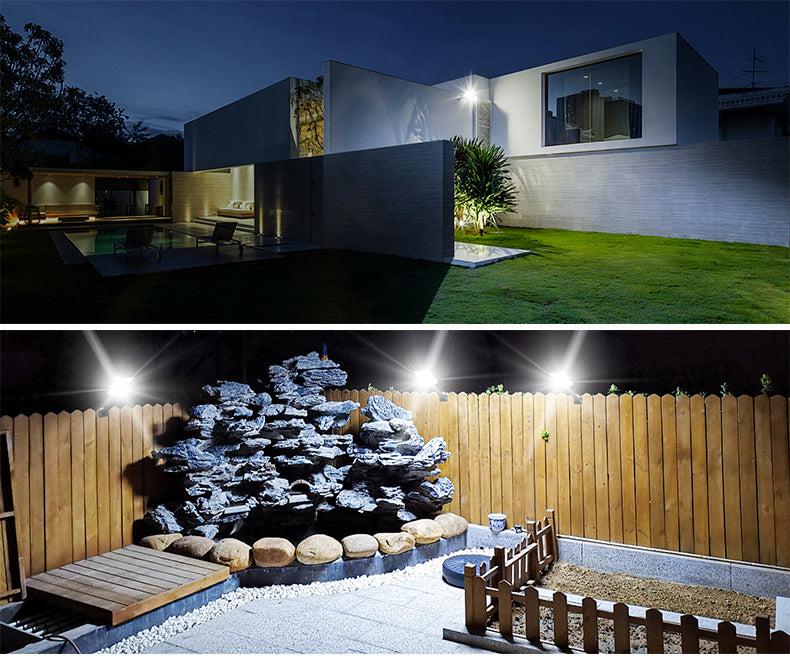
Location
Choosing the right spot for your solar motion light makes a huge difference in how well it works. You want your light to shine bright and respond quickly, so let’s look at what matters most.
Obstructions
Obstructions can block sunlight and mess with your light’s sensor. If you place your solar motion light under a tree or next to a wall, shadows will fall on the solar panel. This cuts down on charging and can leave your garden dim at night.
Tip: Always check for anything that might cast a shadow during the day—branches, fences, garden décor, or even seasonal plants. Move your light to a spot that gets at least 6–8 hours of direct sunlight. Facing the solar panel south helps you catch the most rays if you live in the Northern Hemisphere.
High-Traffic Areas
You want your light to activate when someone walks by, not when a squirrel runs past a bush. Place your solar motion light near pathways, driveways, or entry points where people actually move.
- Space lights about 2–3 feet apart along walkways for even coverage.
- Put lights at turns or near steps to boost safety and visibility.
- Avoid placing lights too close together, which can create shadows and reduce the overall effect.
A staggered or curved layout looks more natural and helps prevent dark spots. Think about how you use your garden at night. Where do you walk? Where do you want extra security? Place your lights where they’ll do the most good.
Angle
The angle of your solar motion light affects both how much sunlight the panel gets and how well the sensor detects movement. Getting this right means brighter nights and fewer missed activations.
Sensor Range
Mounting height and angle play a big role in detection.
- Install your light at a height between 6 and 10 feet for the best sensor coverage.
- Tilt the fixture so the sensor faces the area you want to monitor.
- Keep the sensor’s line of sight clear—no bushes or decorations in front.
If your light isn’t picking up motion, try adjusting the angle or height. Sometimes a small change makes a big difference.
Coverage Zones
You want your garden to feel safe and look great.
Note: Position the solar panel facing south and adjust the angle seasonally—flatter in summer, steeper in winter—to maximize sunlight capture.
- Experiment with different mounting heights to cover wider areas.
- Angle accent lights 30–45 degrees to highlight features like flower beds or statues.
- Use wide-angle beams for broader coverage without harsh glare.
A well-placed solar motion light can increase energy efficiency by up to 30%, giving you longer runtimes and better performance, even on cloudy days. Test your setup at night and make small tweaks until you get the coverage you want. Your garden will thank you with brighter, safer evenings!
Sunlight Exposure
Patterns
Shaded Spots
You want your solar motion lights to shine bright every night, but shade can get in the way. Trees, fences, and garden décor often cast shadows that block sunlight from reaching the solar panel. When your light sits in a shaded spot, it struggles to charge fully during the day. You might notice dimmer light or shorter runtimes at night.
- Solar lights need about 6 to 8 hours of direct sunlight each day for a full battery charge.
- Shading from trees, buildings, or other objects increases charging time and reduces nighttime illumination.
- Even partial shade can cut charging efficiency, so try to place your lights where they get the most sun.
Tip: Walk through your garden during peak sun hours and look for spots that stay sunny. Avoid placing solar lights near anything that casts a shadow, especially during midday when the sun is strongest.
Seasonal Changes
Seasons change, and so does the sun’s path across your garden. In summer, you get longer days and stronger sunlight. Your solar panels charge quickly, and your lights stay bright all night. Winter brings shorter days, lower sun angles, and sometimes snow or rain. These conditions reduce sunlight, so your lights may not charge as well.
Spring and autumn can be tricky, too. Cloudy weather and falling leaves might block sunlight or cover your panels. You need to pay attention to these changes if you want reliable lighting year-round.
Note: Adjusting your solar panel’s tilt angle and orientation with the seasons helps capture more sunlight. South-facing panels work best in the Northern Hemisphere. If you live in a region with big seasonal swings, check your lights more often and make small adjustments as needed.
Panel Care
Trimming Branches
Overgrown branches and tall plants can sneak up on your solar panels. They cast shadows and drop leaves or debris, which block sunlight and slow down charging. You should trim nearby branches and clear away any plants that grow too close to your lights.
- Regularly check for new growth around your solar lights.
- Trim branches and remove leaves or debris from the panel surface.
- This simple step keeps your panels clean and exposed to the sun.
🌱 Keeping your panels clear of shade and debris means brighter lights and longer battery life.
Relocation
Sometimes, you need to move your solar motion lights to get better sunlight. If you notice your lights aren’t charging well, try relocating them to a sunnier spot. Look for areas that get at least 6 to 8 hours of direct sunlight each day.
- Avoid placing lights near tall structures or dense foliage.
- Space multiple lights so they don’t cast shadows on each other.
- Adjust the angle and orientation for maximum sun exposure.
Pro Tip: If you move your lights, test them for a few days to see if performance improves. Small changes in placement can make a big difference in how well your solar motion lights work.
Cleaning & Maintenance
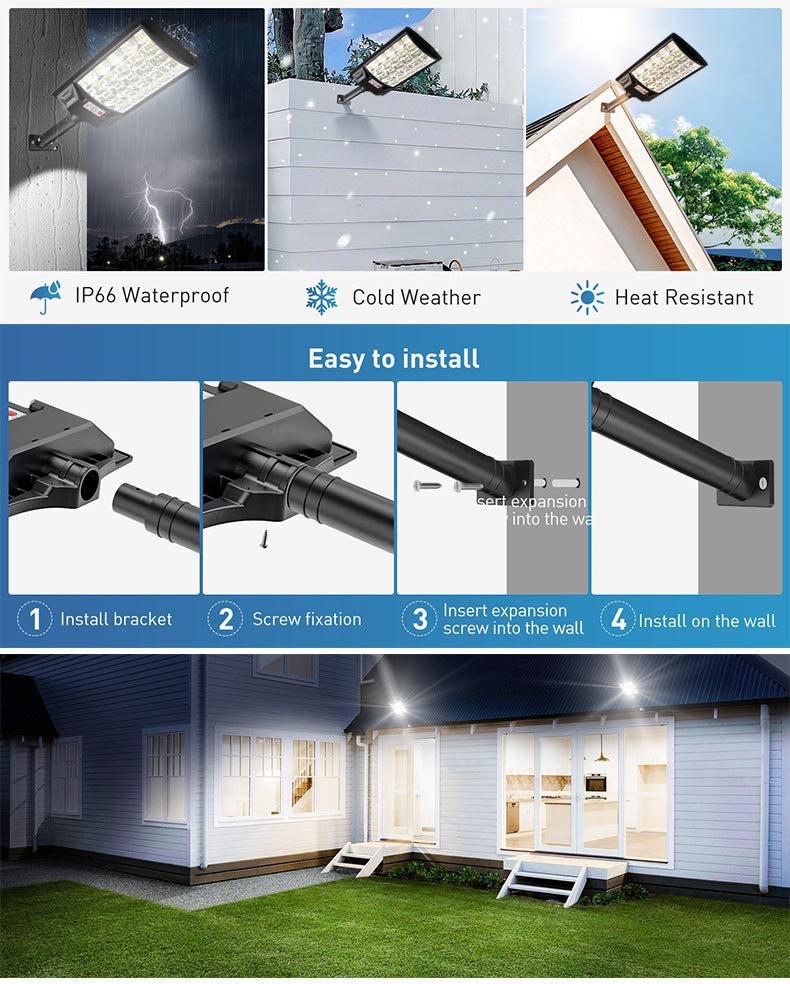
Keeping your solar motion lights in top shape doesn’t take much time, but it makes a huge difference in how well they work. A little regular care helps your lights shine brighter, last longer, and stay reliable through every season.
Solar Panel Care
Dirt Removal
Dust, pollen, and leaves love to settle on solar panels. When dirt builds up, your lights can’t soak up as much sunlight. That means dimmer nights and shorter runtimes. You can keep your panels clean with a few simple steps:
- Wipe the panels with a soft, damp cloth every month.
- Use a mild detergent and a soft sponge for stubborn grime.
- Avoid anything abrasive—scratches can lower efficiency.
- Rinse with clean water and dry gently with a towel or squeegee to prevent streaks.
🌞 Tip: Clean your panels early in the morning or late in the evening when they’re cool. This helps you avoid streaks and thermal shock.
Even if it rains, don’t skip manual cleaning. Rain removes loose dust but leaves behind sticky dirt and bird droppings. Regular cleaning can boost your panel’s energy absorption by up to 20%.
Cleaning Frequency
How often should you clean your solar panels? It depends on where you live and your garden’s environment. Here’s a quick guide:
|
Aspect |
Recommendation |
|---|---|
|
Cleaning Frequency |
Every 6–12 months; more often in dusty, polluted, or bird-prone areas |
|
Effect of Rain |
Removes loose dust but not stubborn dirt; manual cleaning necessary |
|
Best Cleaning Conditions |
Cool, overcast times (early morning or late evening) to avoid streaking and thermal shock |
|
Cleaning Method |
Turn off lights, use soft cloth/sponge with mild detergent, rinse with clean water, dry gently |
|
Consequences of Not Cleaning |
Reduced sunlight absorption, dimmer lights, shorter illumination, overheating, long-term damage |
If you live near trees, a busy road, or lots of birds, check your panels more often. A quick wipe every few weeks keeps your lights working their best.
Damage Check
Cracks
Outdoor life can be tough on solar lights. Extreme heat, cold, or even a stray soccer ball can cause cracks in the panel or casing. Cracks let in moisture, which can corrode internal parts and mess with your light’s performance. Always check for:
- Cracks or chips on the solar panel surface
- Broken or loose casing
- Water spots inside the light
If you spot any damage, act fast. Water and electronics don’t mix!
Component Replacement
Sometimes, even with great care, parts wear out. Batteries lose their charge over time, and sensors can get finicky. Here’s what you can do:
- Replace batteries when your lights start fading or don’t last all night. High-quality rechargeable batteries, like Li-ion, work best.
- Check wiring and connections for corrosion or looseness. Clean terminals and tighten connections as needed.
- Swap out faulty sensors or LED bulbs if your light stops responding or flickers.
🔧 Note: Routine checks and quick fixes keep your solar motion lights shining bright and working reliably, season after season.
With a little attention, you’ll enjoy a safer, brighter garden every night!
Choosing Solar Motion Light
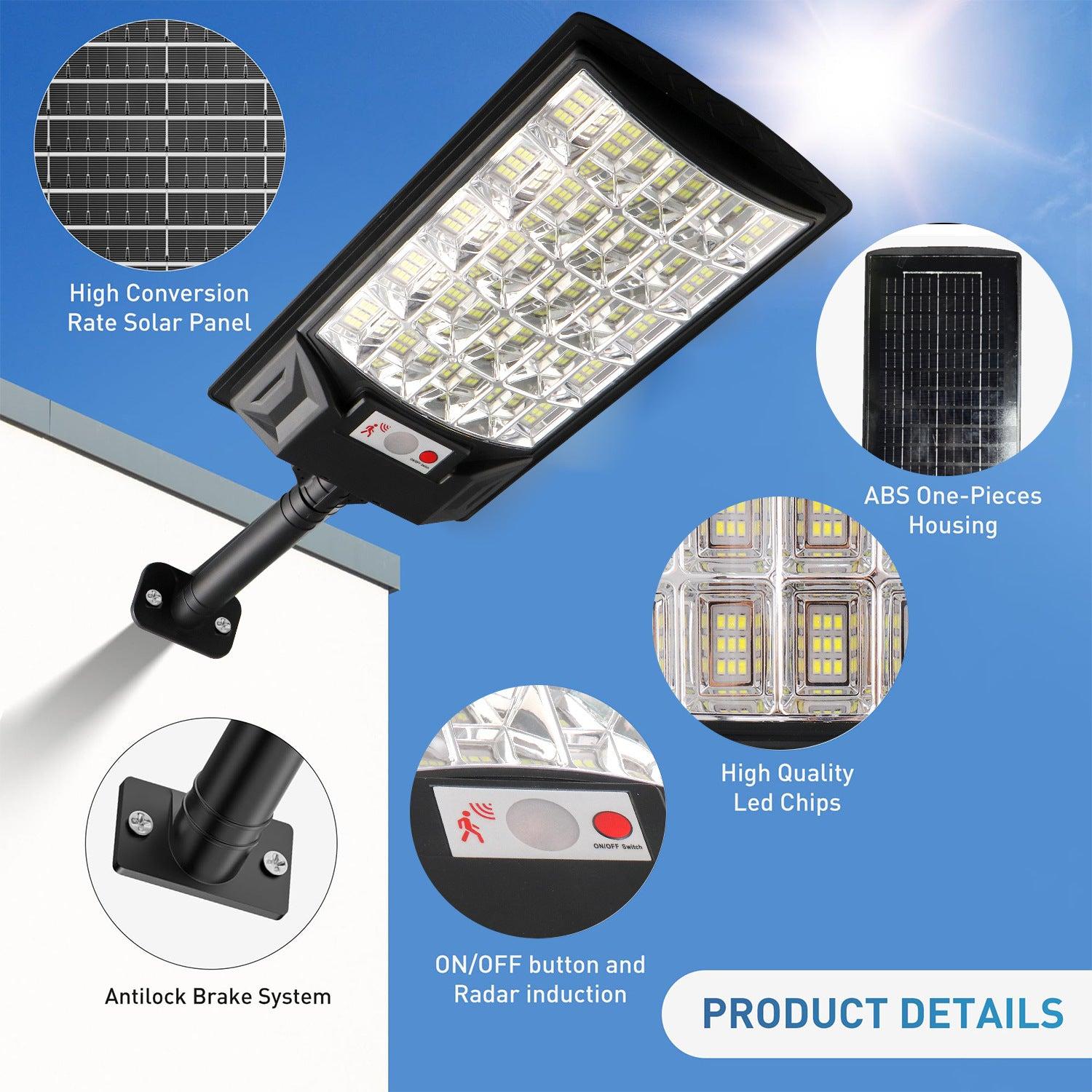
Picking the right outdoor solar lights for your garden can feel overwhelming, but you can make it simple by focusing on what matters most. You want lights that fit your space, shine bright, and last through every season. Let’s break down the main things you should look for.
Light Types
You’ll find several types of outdoor solar lights, each with its own strengths. Here’s a quick look at the most popular options and how they compare:
|
Type of Solar Motion Light |
Typical Use Case |
Key Features |
|---|---|---|
|
Wall-Mounted Solar Motion Lights |
Walls, fences, building sides |
Wide coverage, adjustable heads, great for entrances and driveways |
|
Spotlights |
Pathways, signage, garden features |
Focused, bright beams, adjustable direction |
|
Floodlights |
Backyards, parking lots, large spaces |
Very bright, wide beam, strong security lighting |
|
Pathway Lights |
Walkways, garden paths |
Low-profile, subtle, motion-activated, adds style |
|
Motion Sensor Floodlights with Cameras |
Security and surveillance |
Combines light with video recording, remote access, extra peace of mind |
You might also see solar string lights for decoration or solar deck lights for patios and stairs. Each type brings something unique to your garden, whether you want to highlight a flower bed, light up a path, or boost security.
Brightness
Brightness makes a big difference in how well your outdoor solar lights perform. You measure brightness in lumens. For small gardens or cozy pathways, you only need about 100 to 300 lumens. If you have a bigger yard or want to light up a driveway, look for lights with 1000 lumens or more. The best outdoor solar lights let you adjust brightness, so you can set the mood or ramp up security when needed.
💡 Tip: If you want a light that covers a large area and stays bright all night, check out Rackora’s Moon-Inspired Solar Motion Sensor Street Light. It delivers 500W of power with 225 LEDs, lighting up to 100 square meters—perfect for both security and style.
Sensitivity
Sensitivity refers to how well your solar motion light detects movement. Some lights pick up motion from 10 feet away, while others sense movement up to 50 feet. You want a sensor that matches your space. If your garden is small, a shorter range works best. For bigger areas, choose a light with a longer detection range. Adjustable sensitivity helps you avoid false triggers from pets or passing cars.
Garden Size
Your garden’s size shapes your lighting plan. You don’t want to waste energy or leave dark spots. Here’s how to match your lights to your space:
Single vs. Multiple
If you have a small garden or just want to light a path, one or two outdoor solar lights might do the trick. For larger gardens, driveways, or wide patios, you’ll need several lights to cover every corner. Spacing your lights evenly helps you avoid shadows and keeps your garden safe.
- Use a single powerful light for focused security or to highlight a feature.
- Choose multiple lights for even coverage along walkways, fences, or flower beds.
- Mix and match types—combine spotlights for accents and floodlights for wide areas.
Coverage Area
You want to know how much space your lights will cover. Here’s a handy table to help you decide:
|
Garden Size / Area Type |
Recommended Lumens |
Approximate Coverage (sq ft) |
|---|---|---|
|
Small gardens or pathways |
100 - 300 lumens |
5 - 15 sq ft |
|
Larger gardens or driveways |
1000 - 5000 lumens |
Up to 150 sq ft or more |
Motion sensor range should match your garden size. For small spaces, a 10-15 foot range works well. For bigger yards, look for a sensor that reaches up to 50 feet. The best outdoor solar lights, like the Rackora Moon-Inspired Solar Motion Sensor Street Light, offer wide coverage and adjustable settings, so you can customize them for your needs.
🌙 Note: The Rackora Moon-Inspired Solar Motion Sensor Street Light stands out with its smart radar motion detection, dusk-to-dawn light control, and remote operation. Its IP66 waterproof rating means you can count on it in any weather.
When you choose outdoor solar lights, think about these features:
- Decide what you need—security, pathway lighting, or decoration.
- Match the brightness and sensor range to your garden’s size.
- Pick a light with a strong battery and high weather resistance (IP65 or higher).
- Look for easy installation and adjustable settings.
- Consider extra features like remote control or smart automation.
You want your garden to look great and feel safe. The right solar motion light makes all the difference. Rackora’s Moon-Inspired Solar Motion Sensor Street Light brings together modern design, powerful performance, and smart features—making it a top choice for anyone who wants the best outdoor solar lights for their space.
Settings Adjustment
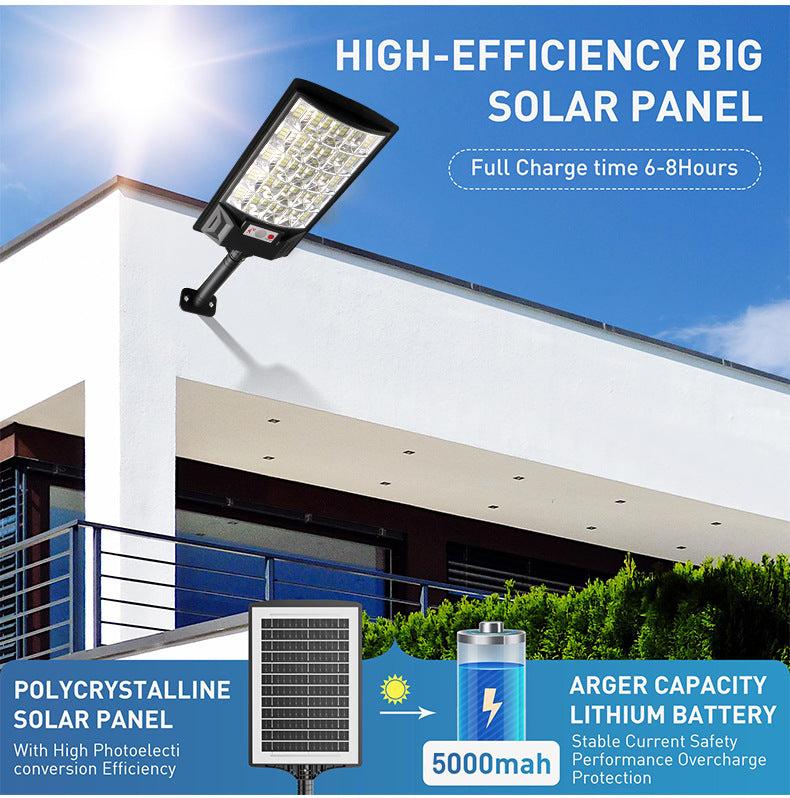
Sensitivity
Adjusting the sensitivity of your solar motion light can make a huge difference in how well it works in your garden. You want your light to respond to real movement, not every little thing that passes by.
False Triggers
Have you ever noticed your solar light turning on for no reason? Maybe a breeze moves a branch, or a car drives by on the street. These are false triggers. They waste battery power and can get annoying fast.
Tip: Place your light away from swaying trees, busy roads, or spots where pets roam. Adjust the sensor so it points toward the area you want to monitor, not toward places with lots of random movement.
Most solar motion lights let you change the sensitivity setting. Start with a medium level. If you see too many false alarms, lower the sensitivity. If your light misses real movement, bump it up a notch. Regularly check and fine-tune these settings. You’ll keep your light working just right and save energy.
Detection Range
The detection range tells you how far away the sensor can pick up movement. If you set the range too high, you might catch things you don’t want—like passing cars or animals. If it’s too low, you might miss someone walking up your path.
- Mount your light between 7 and 10 feet high for the best coverage.
- Adjust the angle so the sensor faces the main walkway or entry point.
- Test the range by walking through your garden at night.
You can use the table below to help decide:
|
Detection Range |
Best For |
Common Issues |
|---|---|---|
|
Short (10-15 ft) |
Small gardens, patios |
Missed movement |
|
Medium (15-30 ft) |
Pathways, driveways |
Balanced coverage |
|
Long (30-50 ft) |
Large yards, security |
More false triggers |
Fine-tuning the detection range helps you get the right balance between security and energy savings.
Duration
How long your solar motion light stays on after detecting movement matters for both safety and battery life.
Battery Life
If your light stays on too long, it drains the battery faster. You might notice the light gets dim or shuts off before morning. Setting a shorter duration—like 20 to 30 seconds—helps conserve battery power. Your light will last longer through the night, even on cloudy days.
Note: Some lights offer a constant-on mode. This looks great for parties or gatherings, but it uses up battery power quickly. Use this mode only when you need it.
Seasonal Needs
Seasons change, and so do your lighting needs. In summer, you get more sunlight and longer battery life. In winter, shorter days mean less charging time. You might need to lower the duration setting during colder months to make sure your light lasts all night.
- Check your light’s performance as the seasons shift.
- Adjust the duration to match your garden’s needs.
- Test different settings to find what works best for you.
Smart adjustments keep your garden bright and safe, no matter the season. With a little attention, you’ll enjoy reliable lighting year-round!
Smart Features in Solar Motion Sensor Lights
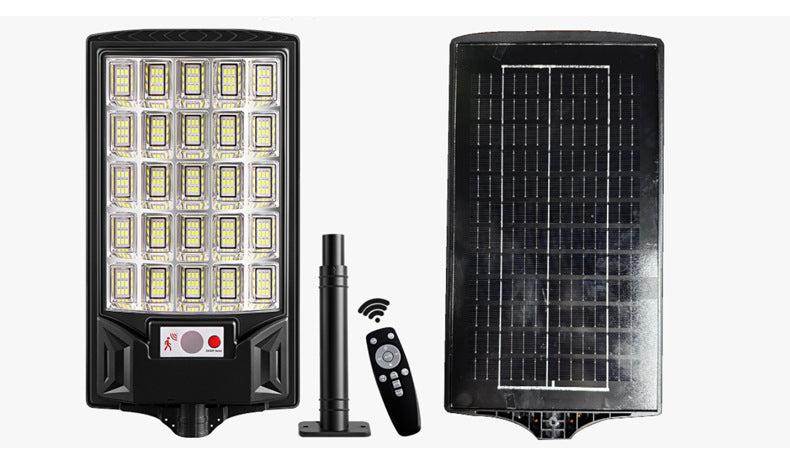
Smart features have changed the way you use solar motion sensor lights in your garden. You get more than just basic illumination. You enjoy a system that adapts to your needs, saves energy, and makes your outdoor space safer and more inviting.
Motion Detection
Motion detection is the heart of solar motion sensor lights. You want your lights to turn on only when someone walks by, not every time a leaf moves. Advanced models use radar-based sensors, which offer instant and reliable activation. These sensors detect motion through changes in reflected signals, so they work even in bad weather or through obstacles like glass and thin walls.
Sensor Adjustment
You can adjust the sensitivity of your solar motion sensor lights to match your garden’s activity. If you have a busy area, lower the sensitivity to avoid false triggers from pets or passing cars. In quieter spots, increase the sensitivity for better coverage. Radar sensors, like the ones in Rackora’s Moon-Inspired Solar Motion Sensor Street Light, give you dependable detection. They respond quickly to movement and ignore most minor disturbances.
Tip: Dual technology sensors combine radar and infrared detection. This setup reduces false alarms by requiring both sensors to pick up motion before the light turns on.
Automation
Automation makes your life easier. Solar motion sensor lights with smart automation turn on at dusk and off at dawn. You don’t have to flip a switch or remember to adjust settings. These lights use built-in sensors to detect ambient light and switch modes automatically. You save energy because the lights only activate when needed. This feature can cut power consumption by up to 50%, which means lower costs and less impact on the environment.
Here’s a quick look at common smart features:
|
Smart Feature Category |
Description and Benefits |
|---|---|
|
Motion Sensors |
Detect movement to activate lights only when needed, saving energy and extending battery life. |
|
Automation |
Dusk-to-dawn operation, brightness adjustment, and automatic mode switching without manual input. |
|
Perimeter Synchronization |
Multiple lights activate in sequence to eliminate dark spots and improve safety around the garden. |
|
Scene Automation |
Dynamic lighting modes for ambiance or security, such as music-sync or strobe patterns. |
|
Remote Control & App Integration |
Customize lighting schedules and modes via remote or smartphone apps for user convenience. |
|
AI-driven Human Recognition |
Filters out false triggers by analyzing heat signatures and movement patterns, enhancing security. |
|
Energy Management |
Advanced solar panel and battery technologies improve charging efficiency and extend runtime. |
You get a lighting system that adapts to your lifestyle and keeps your garden bright only when you need it.
Remote Control
Remote control brings a new level of convenience to solar motion sensor lights. You can adjust settings, change brightness, and set schedules without leaving your chair. Some models even connect to your smartphone, letting you control your lights from anywhere.
Customization
You want your garden to look just right. Remote control lets you customize your solar motion sensor lights for any occasion. You can set different lighting scenes, adjust color temperature, or schedule lights to turn on and off at specific times. If you’re hosting a party, switch to a softer glow. For security, ramp up the brightness and activate motion alerts.
- Schedule lights for evening gatherings.
- Change brightness for different moods.
- Set timers for automatic shutoff.
Rackora’s Moon-Inspired Solar Motion Sensor Street Light offers remote operation, so you can fine-tune your lighting with ease.
User Convenience
User convenience is a big reason to choose solar motion sensor lights with smart features. You don’t have to walk outside to adjust your lights. You can monitor activity, receive alerts when motion is detected, and make changes from your phone or remote. Integration with smart home systems like Alexa or Google Home adds even more flexibility.
Note: Remote control and automation improve security and energy management. You get peace of mind knowing your garden is well-lit and protected, even when you’re away.
Solar motion sensor lights with smart features create a seamless experience. You enjoy reliable lighting, easy customization, and energy savings—all with the touch of a button.
Troubleshooting
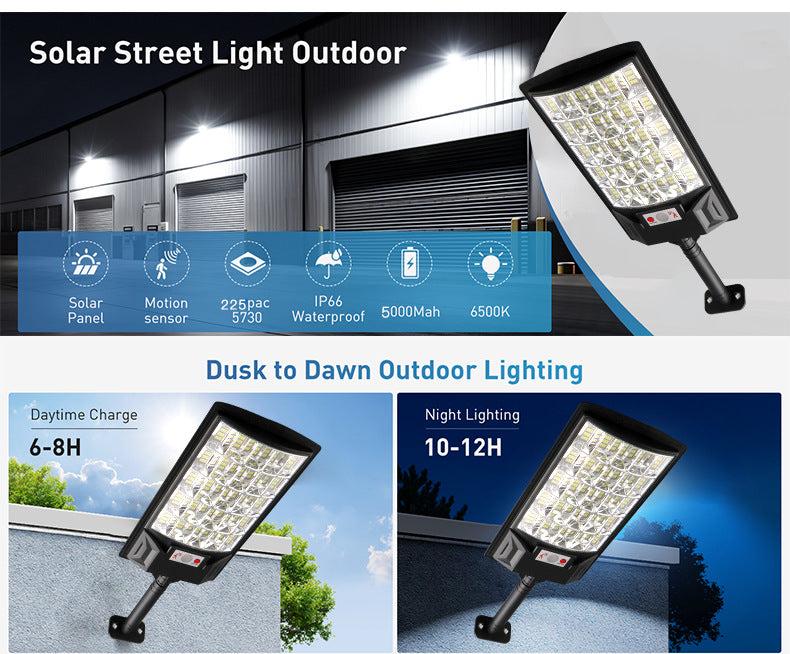
Even the best solar motion sensor lights can run into problems. If your lights aren’t working as expected, don’t worry. You can fix most issues with a few simple checks. Let’s walk through the most common problems and how you can solve them to keep your garden bright and your security strong.
Power Issues
Battery Charge
When your solar motion sensor lights stop working or only stay on for a short time, the battery is often the culprit. Over time, batteries lose their ability to hold a charge. You might notice your lights fading quickly or not turning on at all.
- Check if the battery is old or damaged. Replace it with one that matches the original specifications.
- Make sure the solar panel gets enough sunlight during the day. Move the light if trees or buildings block the sun.
- Inspect for water damage or corrosion around the battery compartment. Clean and dry the area before installing a new battery.
Tip: A fresh battery and plenty of sunlight can restore your lights and boost your garden’s security.
Sensor Alignment
If your lights don’t turn on when you expect, the sensor might be out of alignment. Sensors need to face the right direction to detect movement.
- Adjust the sensor so it points toward the area you want to monitor.
- Test the sensor by walking through its range at night.
- Make sure nothing blocks the sensor, like plants or decorations.
Proper alignment helps your lights respond quickly, keeping your outdoor spaces safe and secure.
Brightness
Panel Cleaning
Dirt, dust, and leaves can cover your solar panel and block sunlight. When this happens, your lights get dim or don’t last through the night. Regular cleaning makes a big difference.
- Wipe the panel with a soft, damp cloth every month.
- Remove any debris or bird droppings right away.
- Clean panels early in the morning or late in the evening to avoid streaks.
A clean panel means brighter lights and better security for your home.
Battery Replacement
If cleaning doesn’t help, the battery might need replacing. Old or worn-out batteries can’t store enough energy, leading to weak or flickering lights.
- Replace the battery if your lights fade quickly or don’t turn on.
- Use high-quality rechargeable batteries for the best results.
Regular troubleshooting—like cleaning panels and checking batteries—keeps your solar motion sensor lights shining bright and reliable for years.
Sensor
Angle
The angle of your sensor affects how well it detects movement. If the sensor points too high or too low, it might miss people or trigger for the wrong reasons.
- Adjust the angle so the sensor covers the main walkway or entry point.
- Test different angles to find the best coverage for your garden.
Correct sensor angles help your lights activate only when needed, saving energy and improving security.
Obstructions
Obstructions can block both the solar panel and the sensor. Overgrown plants, garden décor, or even spider webs can cause problems.
- Check for anything blocking the sensor or panel.
- Trim plants and clear away debris regularly.
By keeping your lights free from obstructions, you ensure they work efficiently and keep your garden secure.
Regular troubleshooting and maintenance help you spot issues early. Clean panels, fresh batteries, and proper sensor alignment all contribute to longer-lasting, more dependable solar motion sensor lights. You’ll enjoy brighter nights and stronger security with just a little care.
Weather & Seasons
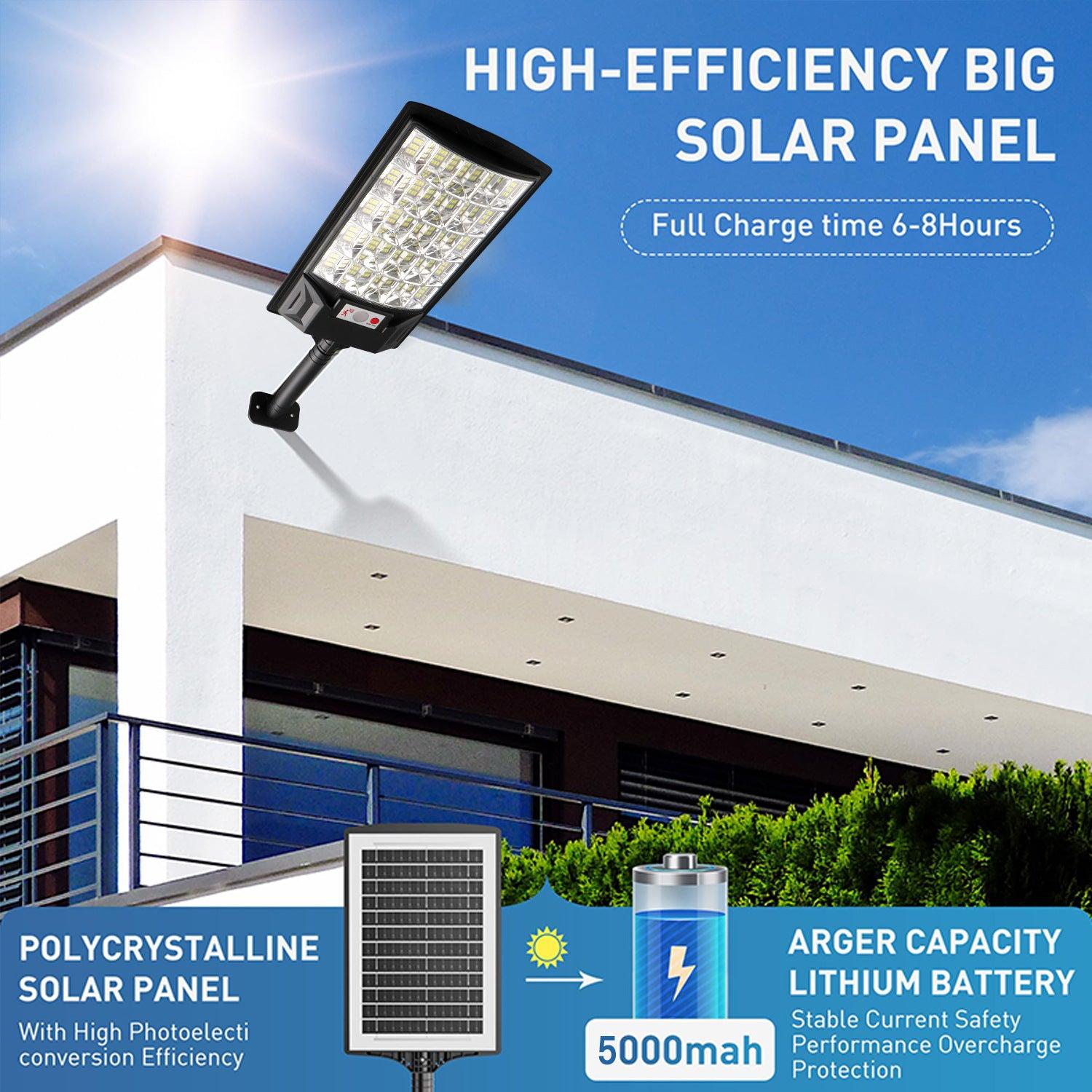
Winter Prep
Winter brings new challenges for your solar motion lights. Shorter days, snow, and freezing temperatures can affect how well your lights work. With a few smart steps, you can keep your garden bright and safe all season.
Low Light
You might notice your solar lights don’t shine as long in winter. The sun sits lower in the sky and days are shorter. Your panels get less sunlight, so the batteries don’t charge as much. Here’s how you can help your lights perform better:
- Clean the Solar Panels Regularly: Snow, ice, and dirt block sunlight. Wipe panels with a soft cloth and warm water. Skip harsh chemicals and rough sponges.
- Adjust the Panel Angle: Tilt your solar panels about 15 degrees higher than your usual setting. This helps them catch more of the low winter sun.
- Monitor Battery Health: Cold weather drains batteries faster. Check battery voltage and replace old batteries with ones designed for low temperatures, like lithium-ion.
- Use Motion Sensors and Timers: Set your lights to turn on only when needed. This saves battery power during long winter nights.
❄️ Tip: Schedule a quick check every week. Clean panels and inspect batteries to keep your lights running strong.
Snow Protection
Snow can pile up on your lights and block the panels. You want to keep them clear so they keep charging.
- Brush off snow after each storm.
- Avoid placing lights where snow drifts build up.
- Use insulated covers or wraps to protect batteries from freezing.
If you see ice forming, gently remove it. Don’t use sharp tools that could scratch the panel.
Durability
Your solar motion lights face rain, snow, wind, and heat all year. Choosing durable models and doing regular checks helps them last longer.
Waterproof Models
Look for lights with a high waterproof rating, like IP65 or above. These models keep out dust and water, so your lights work in rain, snow, or high humidity. Durable materials like ABS plastic, stainless steel, or die-cast aluminum resist rust and corrosion. Tempered glass covers protect the LEDs from impacts.
- Properly sealed components stop moisture from getting inside.
- Impact-resistant designs help in busy areas or rough weather.
🌧️ Note: The Rackora Moon-Inspired Solar Motion Sensor Street Light has an IP66 rating, so you can trust it to handle harsh weather.
Storm Checks
Storms can test your lights. Strong winds, heavy rain, or hail may cause damage. You should:
- Inspect lights after big storms for cracks, loose parts, or water inside.
- Tighten mounting brackets and check for secure wiring.
- Replace damaged batteries or covers right away.
Smart features like motion sensors and intelligent dimming help your lights save energy during tough weather. With regular care and the right models, your solar motion lights can last 8–10 years—even in extreme climates.
Outdoor Solar Motion Sensor Lights for Security & Ambiance
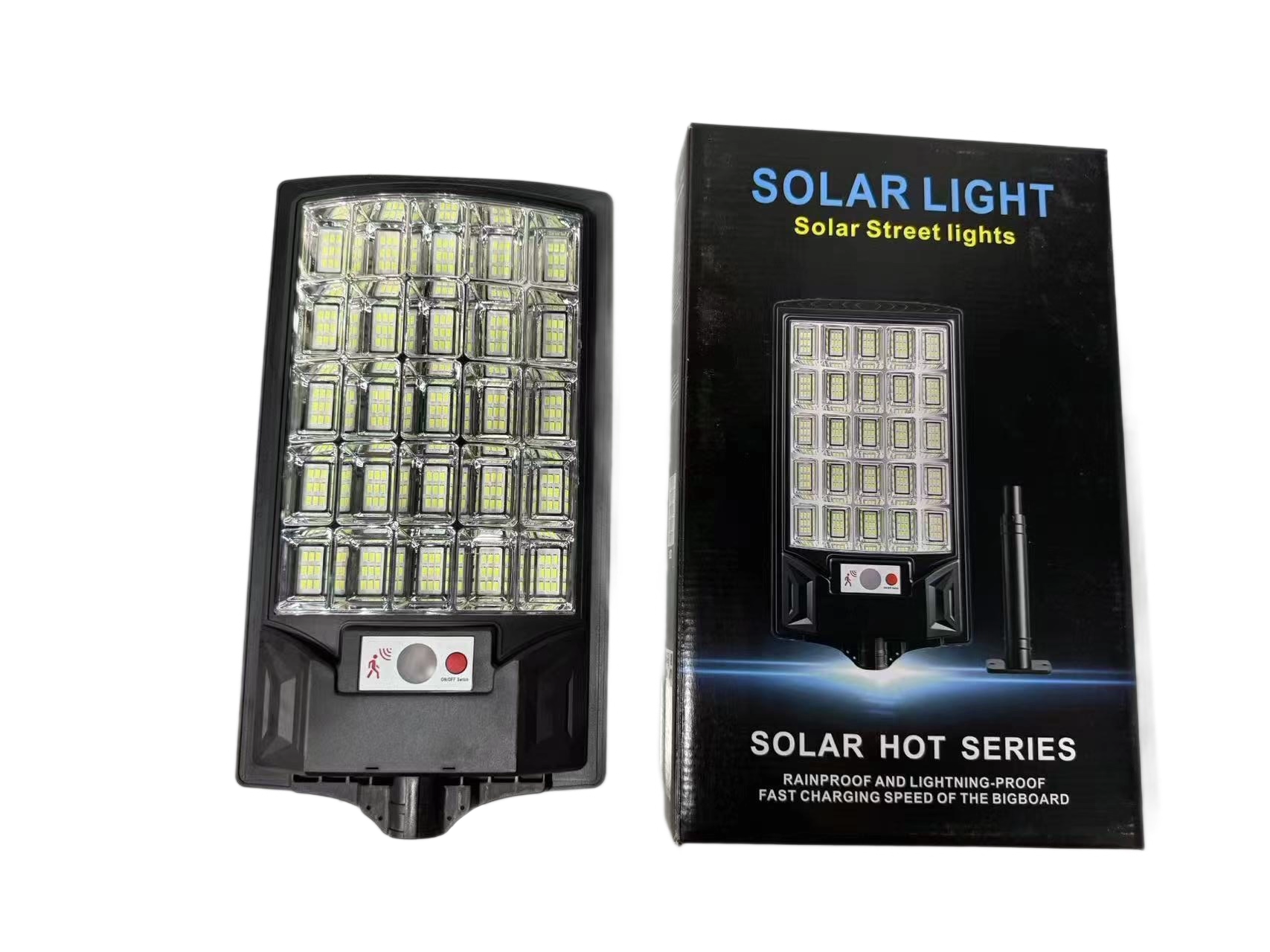
Outdoor solar motion sensor lights do more than just brighten up your garden. You get a powerful mix of security and style that transforms your outdoor space. Let’s look at how you can use these lights to protect your home and create a welcoming atmosphere.
Security
Outdoor solar lights play a huge role in keeping your garden safe. You want to feel secure when you step outside at night, and these lights help you do just that.
Entry Points
You should always place solar security lights near entry points like gates, doors, and garage entrances. When someone approaches, the lights snap on, startling intruders and letting you know someone is there. This sudden burst of brightness acts as a strong deterrent for burglars. You also make it easier for family and guests to find their way home safely.
- Motion sensor lights instantly illuminate entryways when they detect movement.
- Automatic operation means you never have to flip a switch.
- Wide detection zones cover large areas, so you don’t miss any activity.
- Integration with smart home systems lets you control lights remotely and set schedules.
Tip: Mount your outdoor solar motion sensor lights about 7 to 10 feet high for the best coverage at entry points.
Dark Corners
Dark corners in your garden can feel unsafe. You can use outdoor solar lights to brighten these spots and reduce hiding places for unwanted visitors. Motion-activated lights alert you to unexpected guests, whether it’s a delivery person or wildlife. You also prevent trips and falls by lighting up pathways and steps.
- Solar security lights save energy by only turning on when needed.
- Adjustable timers let you customize how long the lights stay on.
- You can combine multiple lights to create a network that covers every shadowy area.
- Integration with cameras adds another layer of security for real-time monitoring.
Note: Regularly check and clean your lights to keep sensors working well and maintain enhanced security.
Ambiance
Outdoor solar motion sensor lights aren’t just for safety. You can use them to create a beautiful, inviting garden that feels magical after dark.
Decorative Lighting
You can highlight garden features like trees, sculptures, or flower beds with outdoor solar lights. Motion sensors add a dynamic touch, lighting up pathways as guests walk by. You get both safety and style in one package.
- Solar motion pathway lights guide visitors and add decorative charm.
- Easy installation lets you experiment with different layouts.
- Integration with string lights, globe lights, or lanterns creates a festive atmosphere.
- Weatherproof designs ensure your lights last through every season.
🌟 Try placing lights behind plants or garden objects to create interesting silhouettes and depth.
Color Temperature
You can set the mood in your garden by adjusting the color temperature of your outdoor solar motion sensor lights. Warm white light feels cozy and relaxing, while cool white gives a modern, elegant look. Some models offer RGB colors for parties or special occasions.
|
Color Temperature |
Mood/Effect |
Best Use |
|---|---|---|
|
Warm (2700K-3500K) |
Cozy, inviting |
Seating areas, patios |
|
Cool (4000K-6500K) |
Crisp, modern |
Pathways, security zones |
|
RGB/Color |
Festive, playful |
Events, garden features |
You can customize brightness and style to match your mood or the event. Outdoor solar lights let you balance security and ambiance with just a few adjustments.
Pro Tip: Regular maintenance keeps your lights shining bright and ensures your garden always looks its best.
Outdoor solar motion sensor lights give you the freedom to create a safe, stylish, and energy-efficient garden. You get peace of mind and a space you’ll love spending time in—day or night.
You can get the most from your solar motion lights by choosing the right brightness, placing them in sunny spots, and cleaning panels often. Check your lights every season to catch issues early and keep them working well. Smart features like remote control and motion sensors add convenience, security, and style. If you want a premium upgrade, try Rackora’s Moon-Inspired Solar Motion Sensor Street Light for reliable, beautiful garden lighting. 🌙
Ready to brighten your garden? Make the switch and enjoy safer, smarter nights outdoors!
FAQ
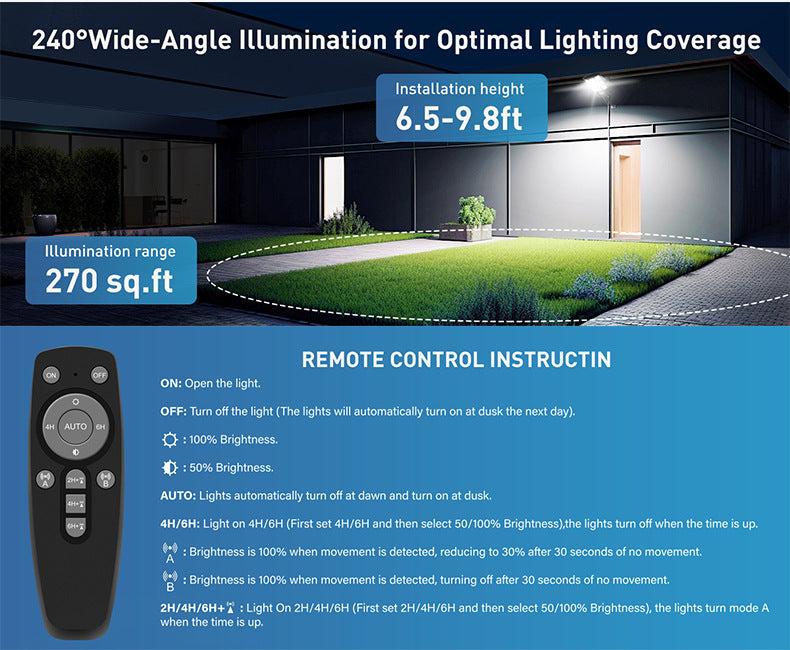
How long do solar motion lights last at night?
Most solar motion lights run for 8 to 16 hours on a full charge. You get the best results when your panel gets 6–8 hours of direct sunlight during the day.
Can I install solar motion lights myself?
Yes, you can! Most models need no wiring. Just mount the light in a sunny spot, adjust the angle, and you’re good to go. You only need basic tools.
What should I do if my light isn’t turning on?
Try these quick fixes:
- Clean the solar panel.
- Check the battery.
- Make sure nothing blocks the sensor.
- Move the light to a sunnier spot.
Do solar motion lights work in winter?
Solar motion lights work in winter, but shorter days and cloudy weather can reduce runtime. Clean panels often and tilt them to catch more sunlight. Choose models with strong batteries for better winter performance.
How do I stop false triggers from pets or cars?
You can lower the sensor sensitivity or adjust the angle. Point the sensor away from busy roads or pet paths. Test different settings until you find what works best for your garden.
Are solar motion lights waterproof?
Most outdoor solar motion lights have a waterproof rating like IP65 or IP66. This means they handle rain, snow, and dust. Always check the product specs before buying.
Can I use solar motion lights for both security and decoration?
Absolutely! Use brighter models for security near entry points. Place softer or color-changing lights along paths or flower beds for ambiance. Mix and match styles to fit your needs.
